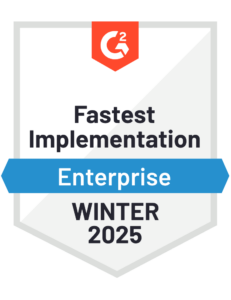Addressing the Layers of Chaos: 10 Tips to Simplify Your Financial Close
Blog post
Share
Over the last decade, the financial reporting landscape has seen significant changes. Finance and accounting executives face mounting pressure to increase the accuracy of financial reporting while decreasing the turnaround time needed to close the books.
Regulatory agencies have introduced a host of new standards and accounting rules impacting materiality thresholds, requiring detailed schedules and new disclosures for public filings. To complicate matters, many organizations are being asked to do more with less as headcount numbers are reduced in response to economic pressures.
The complexity of the financial close is driven by the size and nature of the company (private, public, or non-profit) along with the type of industry. Having this complexity adds layers of chaos that impact the end-to-end process and adversely impact the time it takes to deliver the final financial statements.
There are two overlapping strategies that can help to remove the complexity of your closing process:
- Implement Best Practices
Consider using recommended best practices to remove the complexity from the closing processes. Implementing best practices can address current process challenges and facilitate a good foundation for financial close automation.
- Financial Close Automation
Automated solutions can significantly simplify your financial close process. As an example, you can automate your closing checklist to assign tasks and approvals through workflow, which drives a streamlined reporting process.
Best Practices for a Better Close
- Document Your Closing Process and Cross-Train Your Accounting Staff
Involve the whole organization in understanding the goals and schedule for the close by using well-communicated checklists and project plans. Ensure that roles and responsibilities are documented and well-communicated to all the stakeholders involved in the closing process. Use the documentation for cross-training staff members.
- Develop Partnerships across Departments to Resolve Recurring Cross-Functional Issues and Obstacles to Close
Following each close, an “Obstacles to Close” or “Post Mortem” report is distributed across the organization. This process provides visibility of cross-functional issues and identifies areas for process improvement. By continually looking at ways to improve the financial close, the process can become less cumbersome and easier to manage.
- Review Unused Accounts in General Ledger and Minimize Accounting Data
Minimize accounting data in the core general ledger by limiting code segments to subledgers. The reduction is a somewhat overlooked opportunity to improve the close process, since keeping the general ledger relatively simple accelerates data roll-ups, as well as pushes problem resolution to the business functions that are closest to specific transactions.
Take Advantage of Tech: Financial Close Automation
- Complete Standard Allocations, Adjusting Entries, Accruals and Estimates in Advance of Close
Use a standard allocation system with a defined tolerance or true-up when something is out of the established tolerance. Create the adjusting entries to recognize prepaid expenses, accrue outstanding invoices, relieve accruals that have been paid and recognize depreciation and other amortizations.
- Minimize and Automate Journal Entries During the Closing Process
Reduce the manual journal entry process. If some journal entries need to be created manually, use an upload process with built-in checks and balances. Consider the use of recurring entries and estimates that can streamline the closing process. Streamlining the process even more, AI tools can assist in JE creation, tackling each entry in under a minute.
- The Reporting Process: Use Trial Balance Reports as the Foundation for the Close and the Preparation of Accurate Financial Statements
Use a system-generated adjusted trial balance report to review the final balances in the ledger. Verify that the balances are accurate, checking the account activity if needed. Use standard templates for recurring reports. Report writers can streamline and make reports consistent and substantially reduce data entry and the need for reconciliations.
Best of Both Worlds: Best Practices and Financial Close Automation
- Establish a Closing Date as a Critical System Control
Establish a closing date by which all transactions must be posted. Communicate the closing date to everyone who has access to modify the ledger. A closing date can be implemented as a critical system control and supports the management of your fiscal period close process and the integrity of closed fiscal periods.
- Manage the Financial Close like a Project
Implement a schedule for posting closing entries with duties assigned to specific individuals. Ensure that everyone knows the deadlines and what is needed to meet the deadline.
- Move to a Monthly Soft Close Process
Transition from a monthly hard close to soft monthly closes and quarterly hard closes. The change allows companies to reduce investigation levels and rely on accruals and estimates during soft closes. A soft close is best facilitated with automated reconciliation processes and reporting.
- Develop and Monitor Performance Metrics
Gathering metrics and publishing the results can help to detect and prevent fraud, lead to process improvements, and support automation opportunities.
Conclusion
The financial close process is one of the most fundamental indicators of the efficiency of your fiscal infrastructure. It is the critical foundation that must be in place before your finance and accounting team can even begin to optimize its role as a true consultative business partner and trusted advisor, assisting in achieving strategic goals and creating shareholder value.
Addressing the layers of chaos with our recommended best practices is a key step in the journey to becoming a trusted business partner. Automating the close provides the tools to drive results and support the value of the finance and accounting function.
Written by Nicole Tallman






